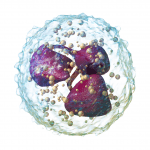Biomedical implants have undoubtedly revolutionized modern medicine, from life-saving pacemakers to cosmetic enhancements like breast implants. However, an often-puzzling challenge in this realm is the body’s tendency to reject these implants, necessitating their removal. This phenomenon, known as the foreign body response (FBR), occurs when the body encapsulates an implant in scar tissue. Researchers are now one step closer to deciphering the mystery of why this happens.
In a recent study, scientists have pinpointed a protein named RAC2 as a significant player in the body’s response to biomedical implants. Their discovery opens doors to enhancing implant design and safety, potentially reducing the need for removal.
The FBR is a complex immune reaction that can lead to the formation of thick capsules around implants, ultimately impacting their functionality and causing discomfort. Researchers collected capsule samples from patients who had their breast implants removed, categorizing them into two groups: those with severe reactions and those with mild reactions.
The team found that the protein RAC2 was highly expressed in samples from patients with severe FBR. When implants subject cells to mechanical stress, immune cells activate RAC2 and other proteins. This activation recruits additional immune cells to the foreign object.
These immune cells, in response to the implant’s mechanical stress, aggregate and merge, creating massive cells that secrete fibrous proteins such as collagen. These proteins contribute to the formation of the encapsulating capsule.
To confirm the role of RAC2 in FBR, the researchers blocked its expression in animal models. RAC2 is specific to immune cells, which means that targeting it with a drug may selectively affect these cells without harming other bodily functions.
Understanding the molecular mechanisms that underlie the foreign body response is a pivotal step in the development of truly bio-integrative medical devices. This research offers a glimpse into the future of biomedical implants, where a deeper understanding of the immune response may lead to more compatible and long-lasting devices, reducing the need for removal and improving the lives of countless individuals.
Journal article: Padmanabhan, J., et al., 2023. Allometrically scaling tissue forces drive pathological foreign-body responses to implants via Rac2-activated myeloid cells. Nature Biomedical Engineering.
Summary Stefan Botha
